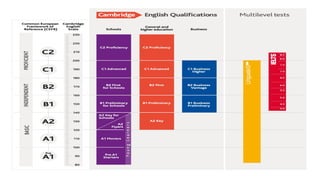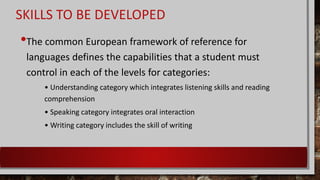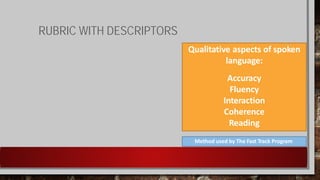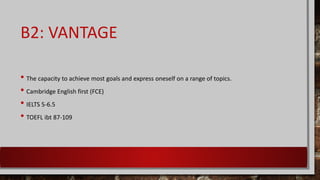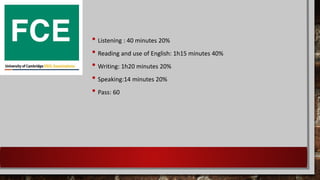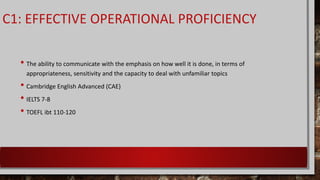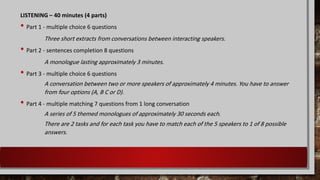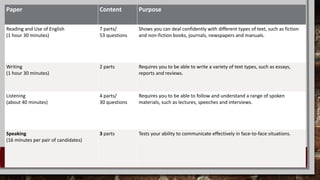The document provides information about Cambridge English exams and the Common European Framework of Reference for Languages (CEFR). It discusses the six main levels of the CEFR from A1 to C2 and describes the exams associated with each level, including sample exam formats, durations, and scoring. The CEFR was developed in the 1990s to serve as a standardized way to describe language ability across Europe and facilitate the recognition of language qualifications.

